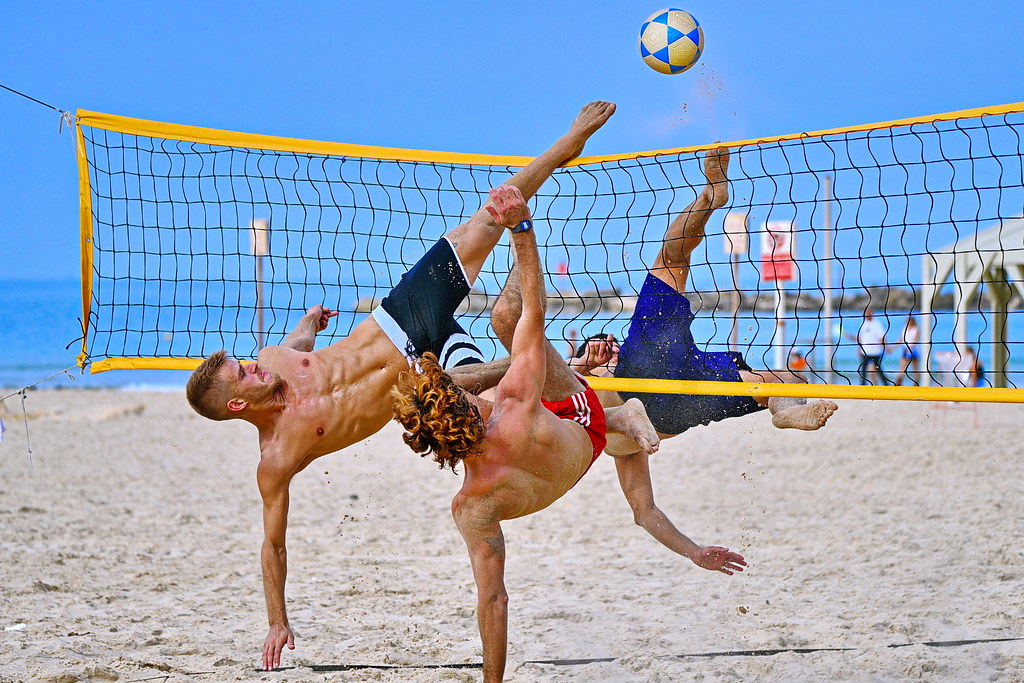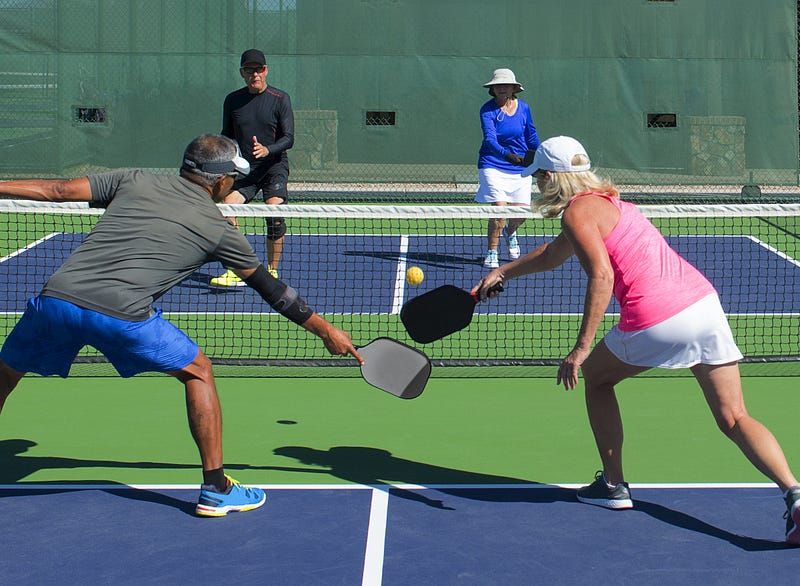Footvolley Unveiled: Origins, Rules, Techniques, and More

Fri Feb 09 2024
Table of Contents
- Origins of Footvolley
- Rules of Footvolley
- Techniques in Footvolley
- Benefits of Playing Footvolley
- Frequently Asked Questions (FAQs) about Footvolley
- Challenges & Considerations
- Footvolley at Franko’s Garage
Footvolley, a dynamic fusion of soccer and beach volleyball, has been making waves worldwide for its engaging gameplay and unique blend of skills. In this comprehensive guide, we will dive into the origins, rules, techniques, benefits, FAQs, challenges, and popularity of footvolley. Additionally, we’ll compare it to its cousin sport, volleyball, highlighting the key differences. Lastly, discover how you can enjoy footvolley at Franko’s Garage, an indoor turf soccer field in College Point, New York, by booking the field through OpenGym.
Origins of Footvolley
Footvolley originated on the beaches of Brazil in the 1960s, where soccer players began playing a modified version of beach volleyball using their feet to strike the ball. The sport gained popularity, and today, it has become a global phenomenon, attracting enthusiasts and players from various parts of the world.

Footvolley in the beautiful beaches of Brazil
Rules of Footvolley
- Teams: Typically, footvolley is played with two players on each side of the net.
- Ball Handling: Players are not allowed to use their hands or arms, except for the goalkeeper when the ball is on the defensive side.
- Scoring System: The scoring system is similar to beach volleyball, with matches typically played to 18, 21, or 15 points, depending on the level of play.
- Net Height: The net height is the same as in beach volleyball, set at 2.2 meters for men and 2.0 meters for women.
- Touches Per Team: Teams are allowed three touches to return the ball to the opponent’s side.

Only hands are not allowed to be used in Footvolley
Techniques in Footvolley
Footvolley requires a unique set of techniques, combining soccer skills with the finesse of volleyball. Players use various parts of their feet to control, pass, and score goals. Techniques such as volleys, overhead kicks, and precision passes are essential for success in footvolley.
Benefits of Playing Footvolley
- Improved Ball Control: Footvolley enhances a player’s ability to control and manipulate the ball using different parts of the foot.
- Cardiovascular Fitness: The fast-paced nature of footvolley provides an excellent cardiovascular workout, improving endurance.
- Teamwork and Communication: Playing in pairs fosters teamwork and communication skills as players coordinate their movements to succeed.
- Mental Resilience: The quick decision-making required in footvolley builds mental resilience and focus under pressure.

Benefits of footvolley for youth players
Frequently Asked Questions (FAQs) about Footvolley
1. Can you use your hands in footvolley?
- Only the goalkeeper is allowed to use hands or arms on the defensive side.
2. How is footvolley scoring different from volleyball?
- Footvolley uses a similar scoring system to beach volleyball, with matches typically played to a certain number of points (e.g., 18, 21, or 15).
3. Can you use the net to score in footvolley?
- No, players cannot use the net to score points. The ball must clear the net and land within the opponent’s court.
4. Is footvolley played on the beach only?
- While footvolley originated on the beach, it can be played on various surfaces, including indoor courts.
Challenges & Considerations
- Weather Dependency: Outdoor footvolley can be weather-dependent, limiting play during adverse conditions.
- Skill Level: Mastering footvolley techniques may pose a learning curve for beginners.
Popularity of Footvolley: Footvolley has gained immense popularity globally, with organized leagues, tournaments, and a growing community of enthusiasts. The sport’s appeal lies in its accessibility, engaging gameplay, and the unique blend of soccer and volleyball skills.

How does footvolley compare to volleyball?
Footvolley at Franko’s Garage
If you’re in New York City and eager to experience the thrill of footvolley, head to Franko’s Garage in College Point. This indoor turf soccer field offers a fantastic setting for footvolley, providing a safe and enjoyable environment for players of all levels. Booking the field is made convenient through OpenGym, a user-friendly platform that allows you to secure your spot online without the hassle of traditional phone calls.

Footvolley at Franko's Garage
Footvolley, born on the beaches of Brazil, has evolved into a globally recognized and loved sport. With its roots in soccer and beach volleyball, footvolley offers a unique and engaging playing experience. Whether you’re a seasoned player or a newcomer, the benefits of footvolley extend beyond the court, contributing to improved skills, fitness, and teamwork. As the sport continues to gain popularity, the opportunity to enjoy footvolley at places like Franko’s Garage in New York City provides enthusiasts with a chance to immerse themselves in the excitement of this dynamic fusion sport.

Experience Footvolley at Franko's Garage in NYC
Join our mailing list
Get insider information on feature updates, new gyms, and more













